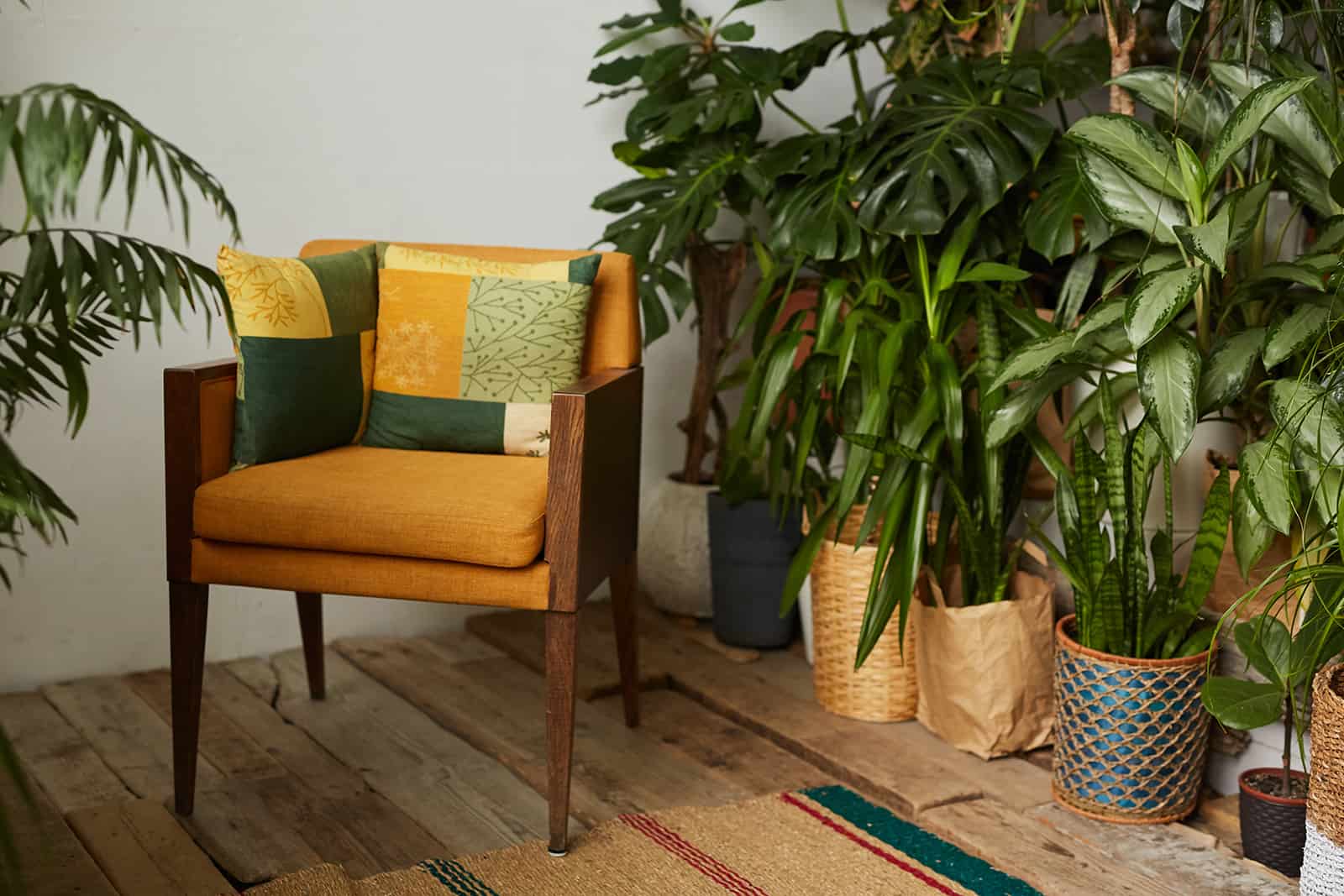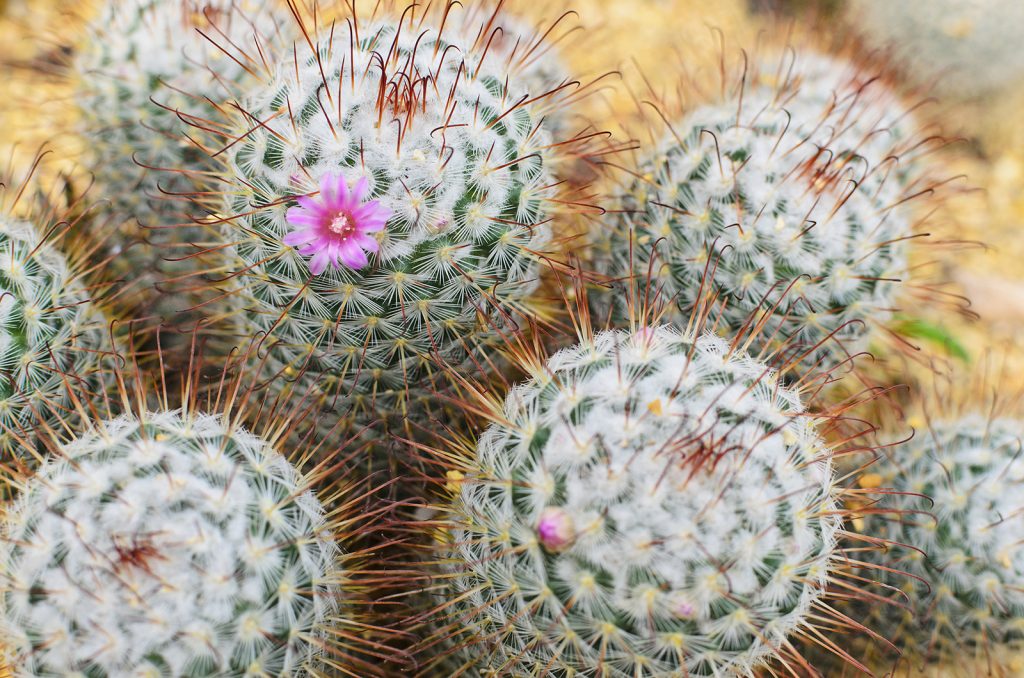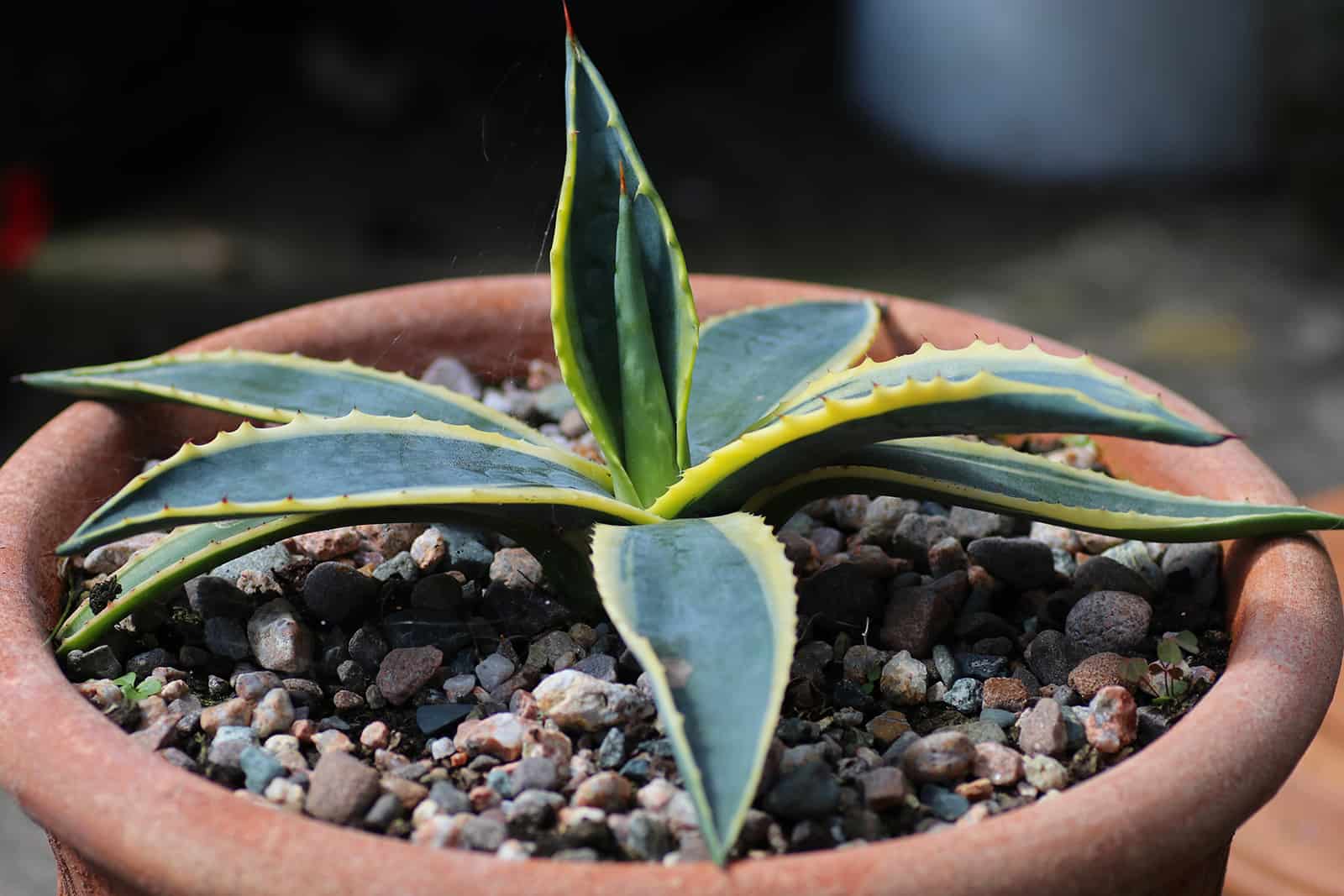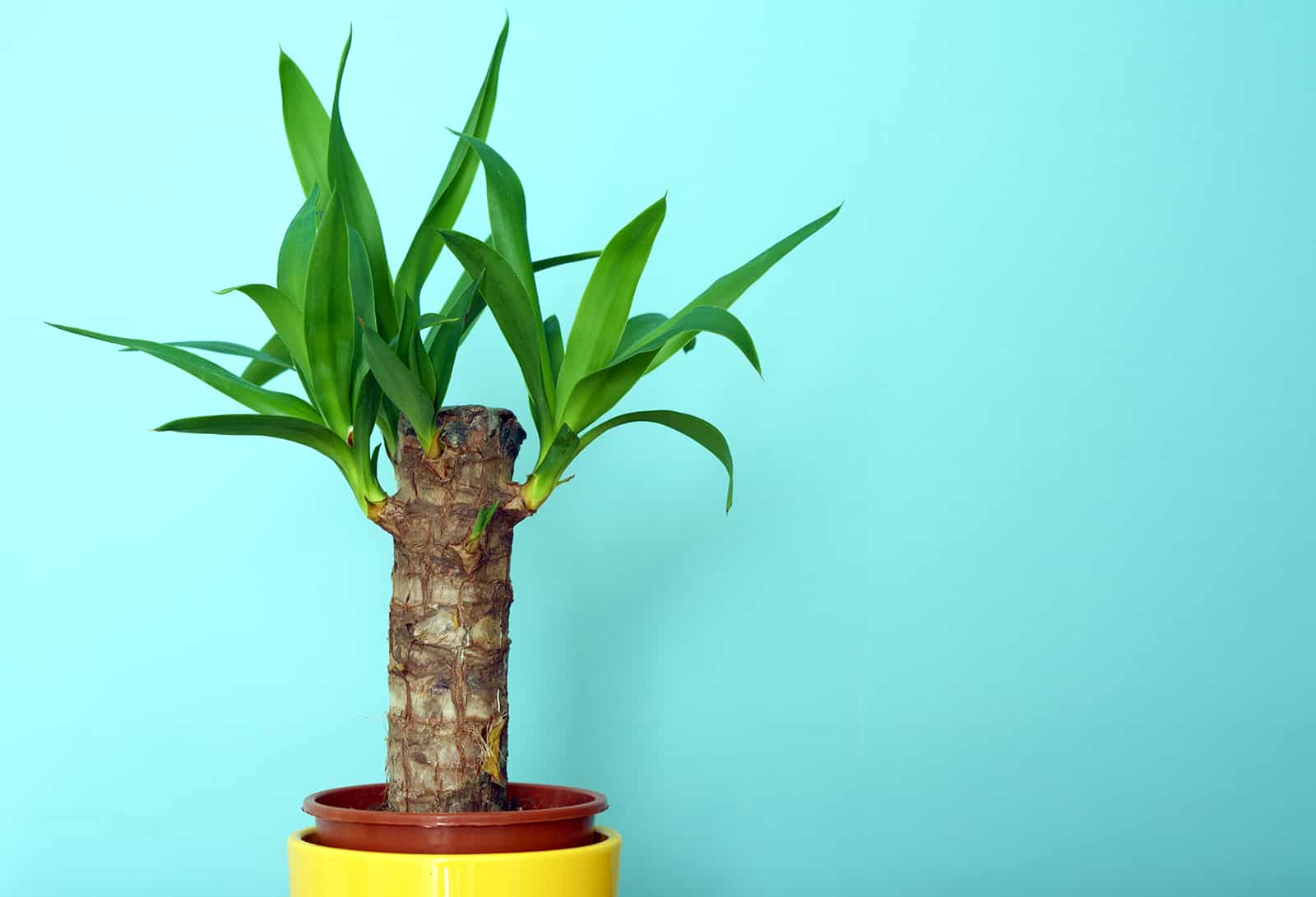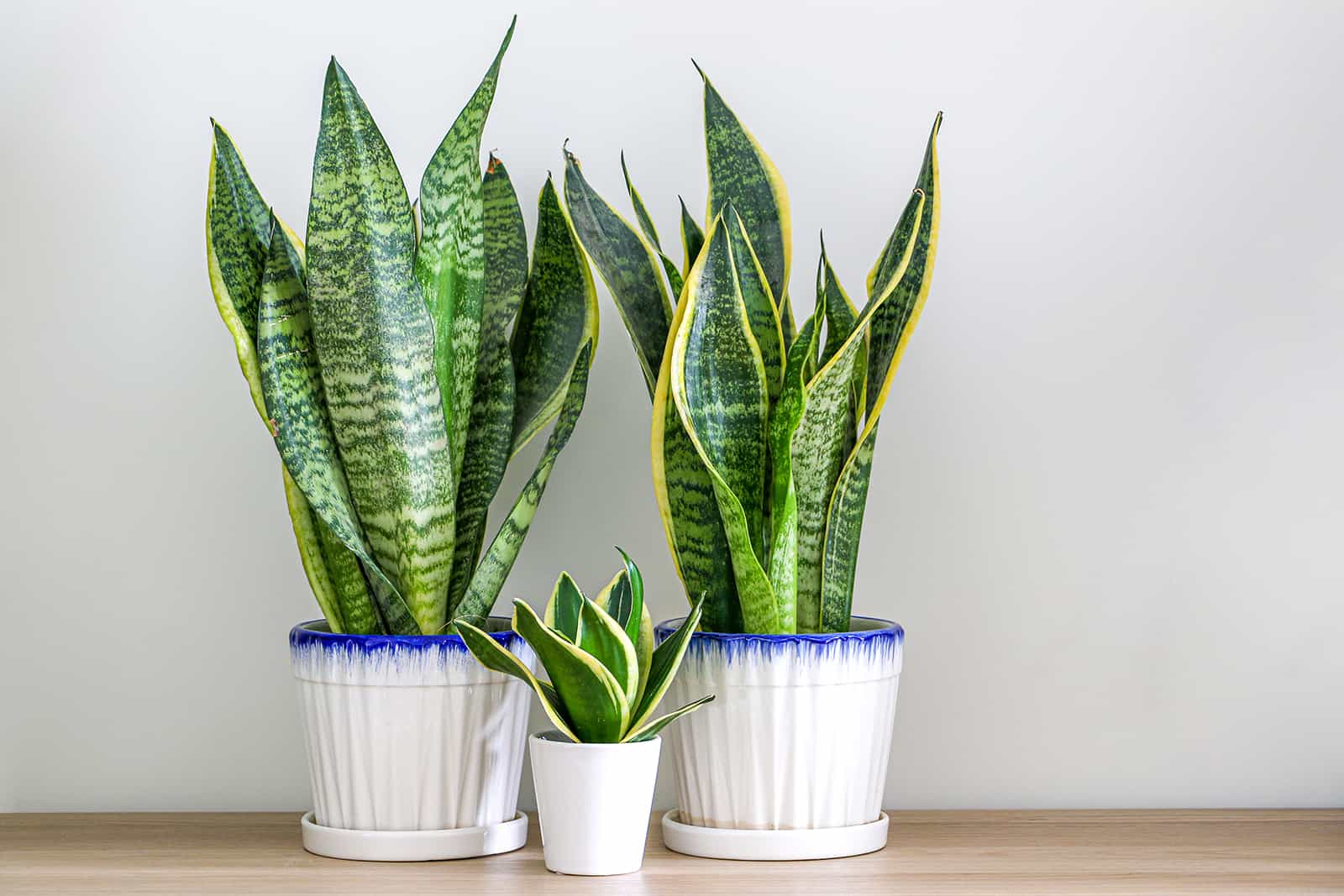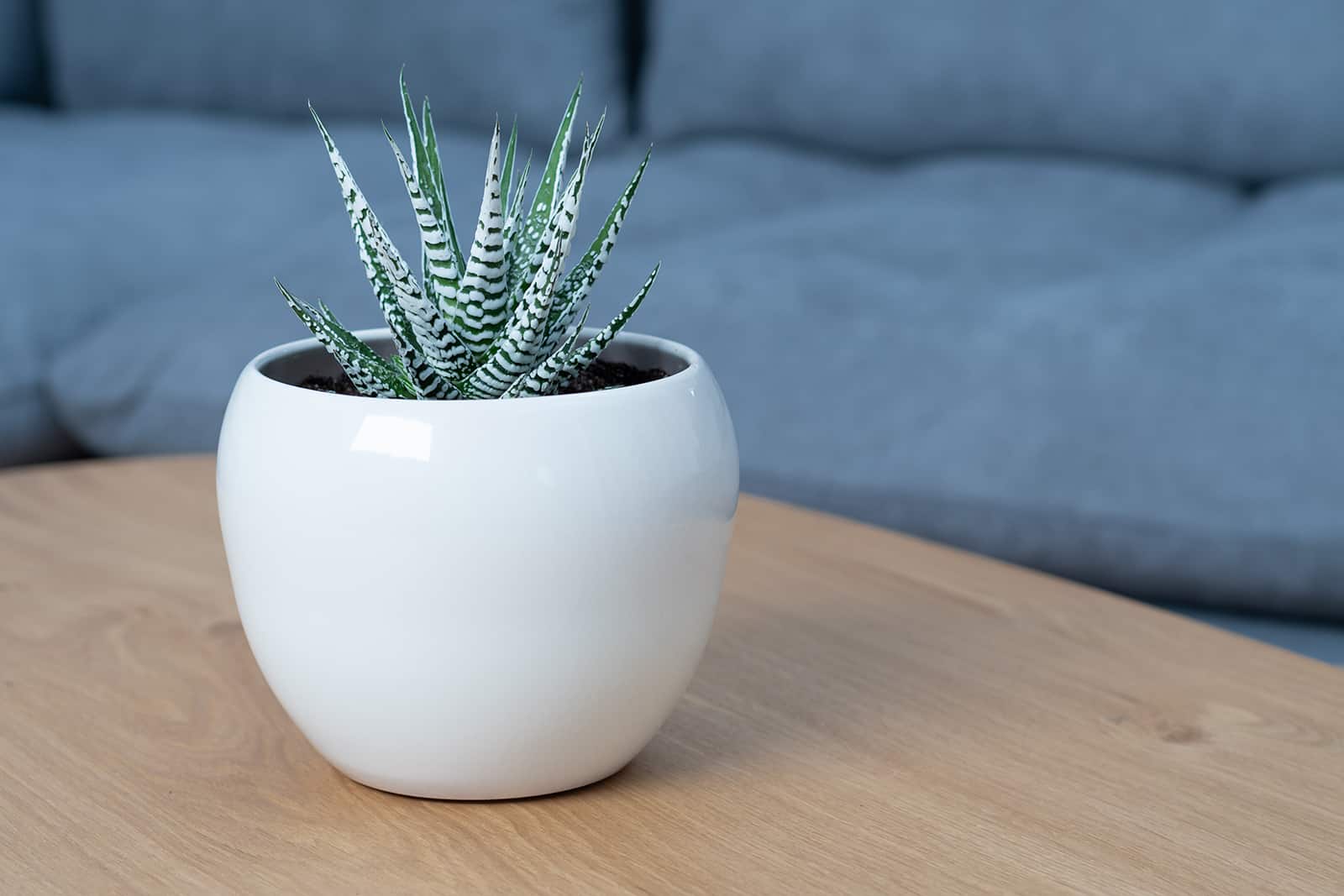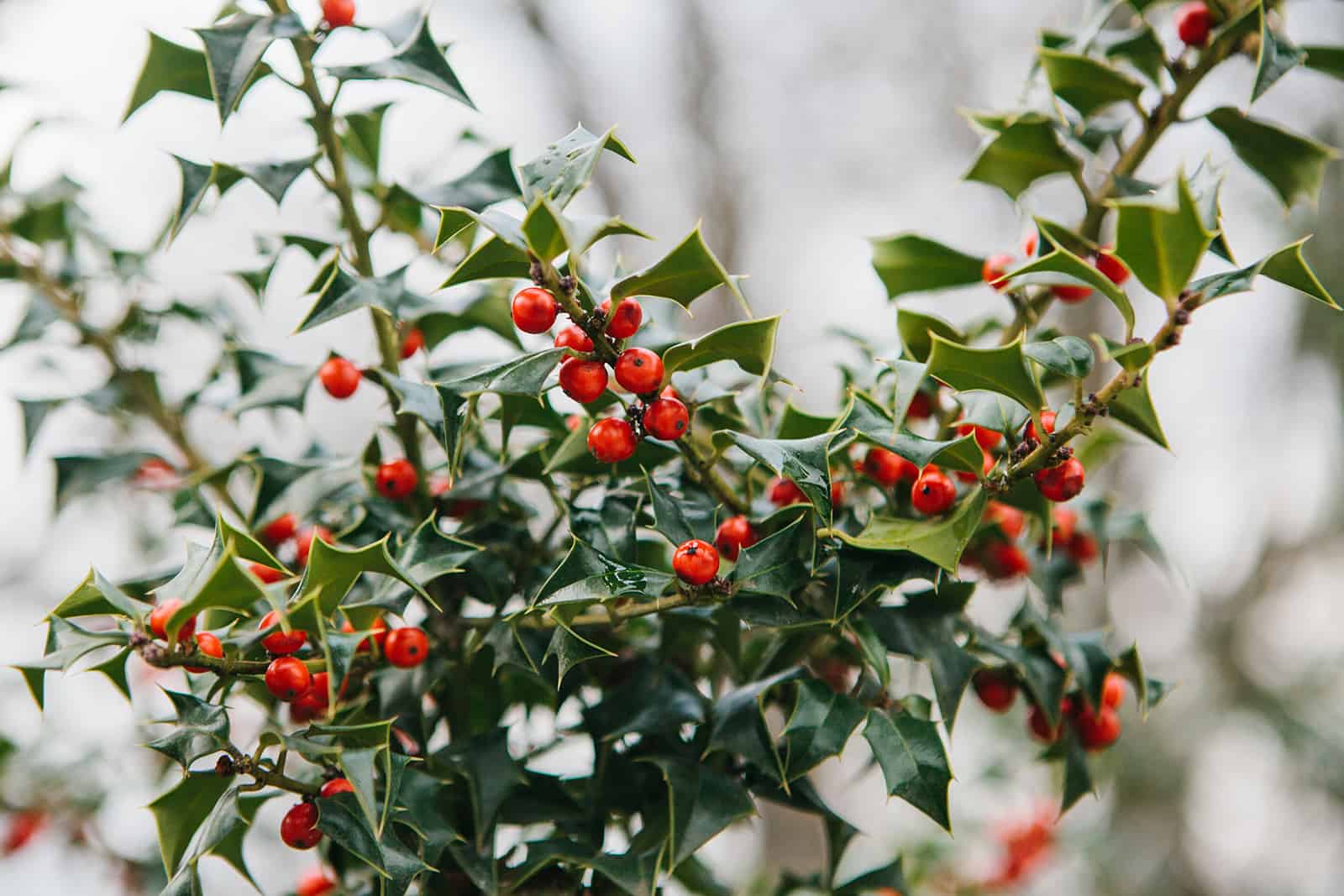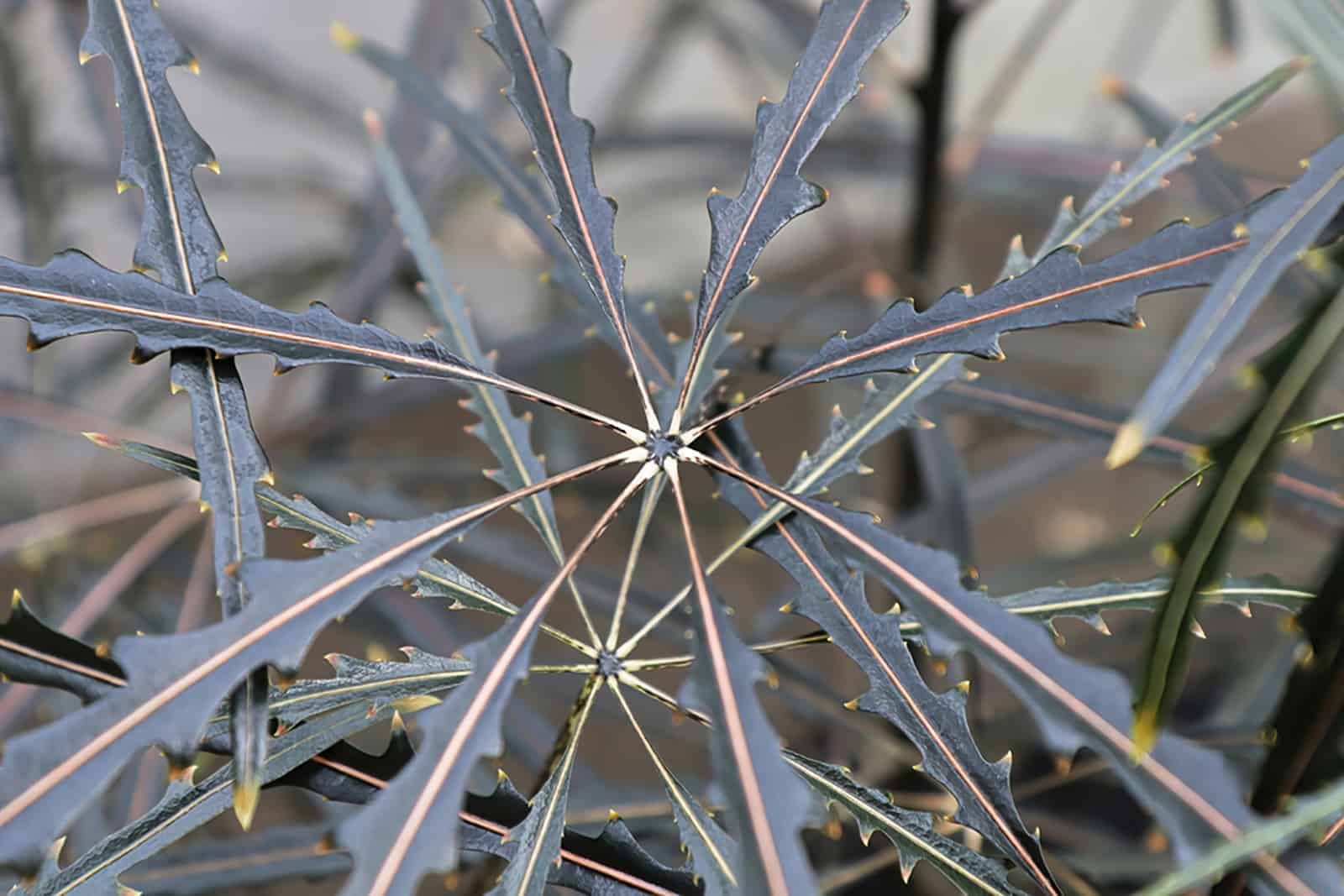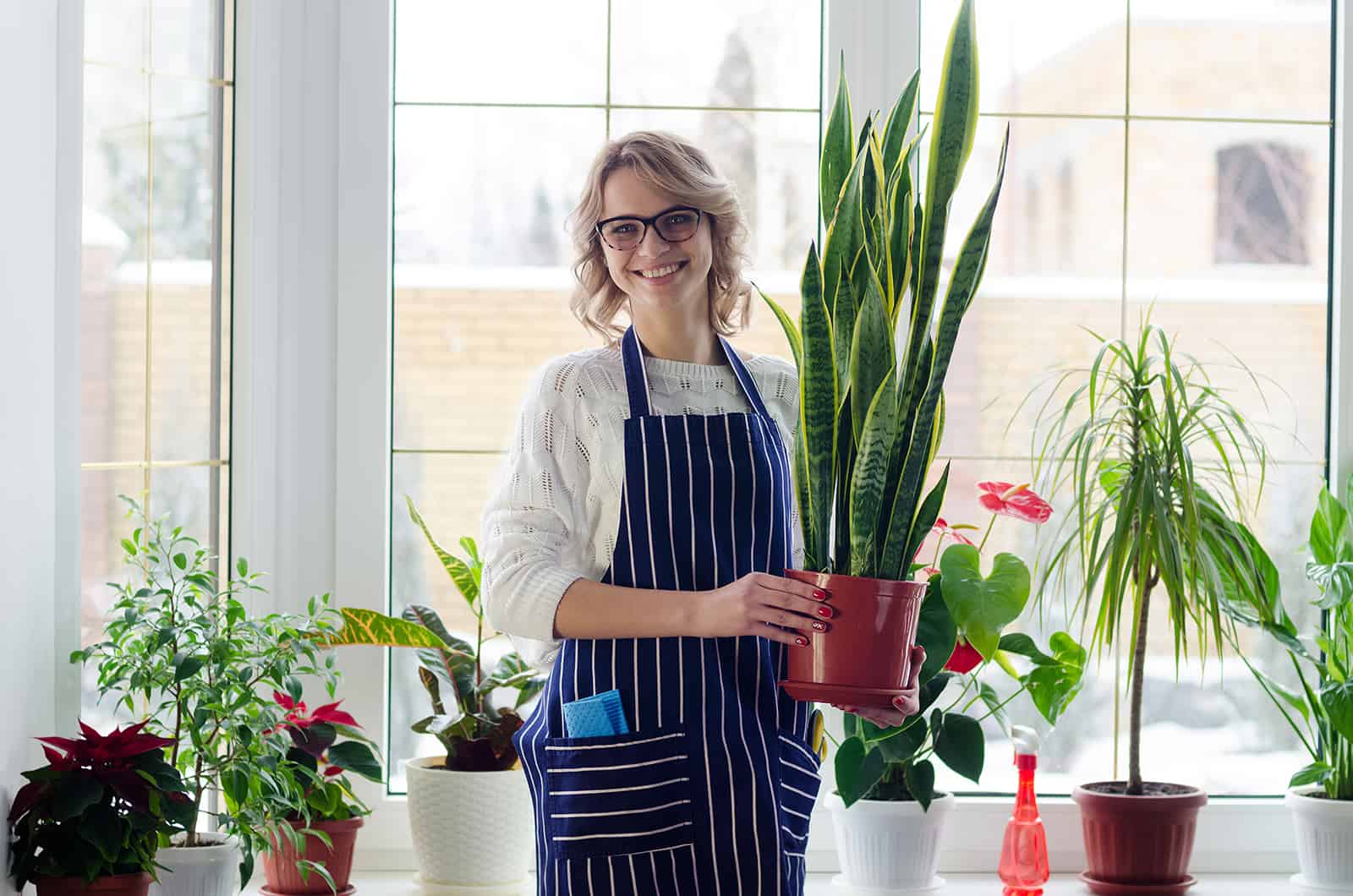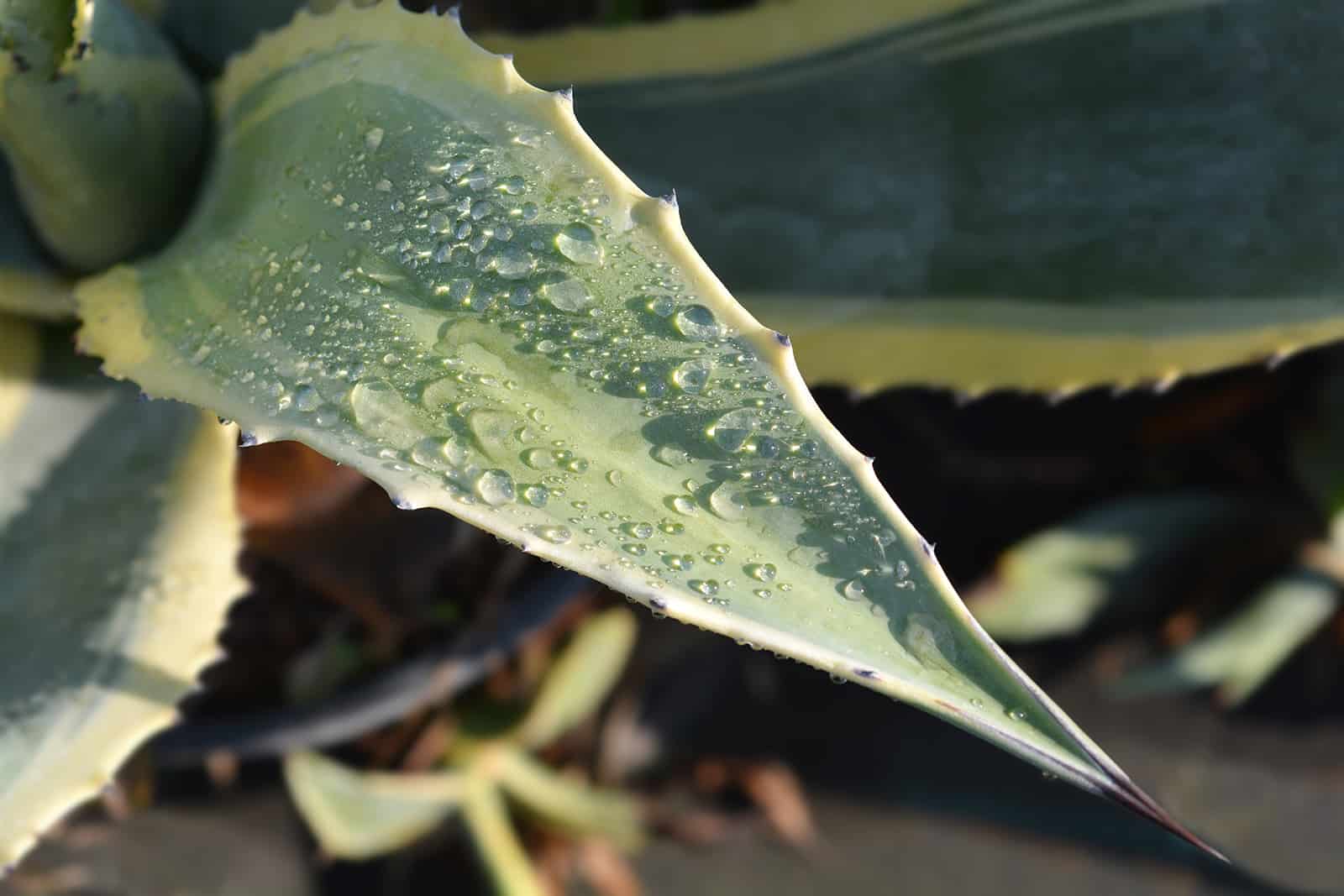This article brings you a list of ten plants with spiky leaves that every plant lover needs to have in their home.
They can add liveliness to every home and will only accentuate the beauty of your living room or personal library.
You will see the world with new eyes once you get one of these prickly friends.
Their care is straightforward, and you can keep them in your office without them distracting you from your work; you can even take a short break and rest your eyes on their formidable foliage!
Now that you know why you need a spiky houseplant, you can have a look at the list below. You’ll find some fantastic plants, and once you see that caring for them is a piece of cake, you won’t be able to resist buying at least one.
Let’s start!
House Plants With Spiky Leaves
Many of the plants with spiky leaves from the list below can be grown both indoors and outdoors. However, we have chosen some of our favorite spiky plants that can improve your home decor instantly.
You could also decide to grow some of these varieties outside, as they can transform the look of your front yard into something out of this world.
P.S. Their care guide is so simple that you won’t be able to resist buying more than one!
1. Century Plant
Century plants are enormous, so you’ll have to ensure you have enough space in your indoor garden for this magnificent plant.
Before we get to the detailed care guide, here is some general information:
[table id=64 /]Even though the sap of this agave plant is poisonous because of the calcium oxalate in their foliage, you can still enjoy their large spiny leaves with just a little bit of precaution.
Agave plant health benefits include boosting metabolism, helping with depression, etc, so it’s not a bad choice for a houseplant.
Don’t forget to wear gloves around it and keep your pets away from it. Although, the plant probably took care of that when it developed those spiky leaves.
Appearance
The color of the long swords that form a gorgeous rosette varies between a gray-blue and gray-green, but we have seen variegated varieties with streaks of yellow that were breathtaking.
The fleshy leaves are serrated and have little teeth around the edges, which aren’t to be messed with.
If you grow this plant outside, you can enjoy a gigantic stem that produces flowers from early to mid-summer. However, it takes many decades for this plant to blossom, and it dies right after it reaches full glory.
Light Requirements
The Century plant loves full sun exposure, but it will tolerate partial shade if it has to. If you have decided to grow your agave indoors, you will need to make sure it gets plenty of sunlight.
Keeping it near a south-facing window is the best thing you can do for this plant.
Water Requirements
Agave plants are succulents, meaning they don’t require regular watering to be at their best. This means that you only need to water them once their soil is completely dry, which might be more frequent during their growing season of spring and summer.
The Century plant is drought-tolerant, and it stores water in its fleshy leaves, so you don’t have to water it more than once a month in winter or even less if the soil isn’t dry.
Temperature And Humidity
This variety of agave can tolerate temperatures down to 20 °F (-7 °C) briefly, but it will sustain damage if exposed to such low temperatures for longer periods.
It loves the sun and warmth, and it thrives best in temperatures between 70-80 °F (21-26 °C). It doesn’t do well in humid environments, so you can keep it in your home without worrying whether the humidity will be enough.
Soil And Fertilizer
Agave plants love slightly acidic to neutral, sandy soils that are well-draining. You can use other mixes if you don’t have a succulent potting mix at hand, but it must have excellent drainage.
Agaves are susceptible to root rot, and growing them in moist substrate only increases the chance of them getting this fungal disease.
You shouldn’t fertilize a century plant. It likes infertile mediums, and also, fertilizing makes this plant bloom sooner, which defeats the purpose of having it in the first place, since it dies after flowering.
2. Aloe Vera
Aloe vera is our favorite succulent out there. We don’t even know where to start because it has so many health benefits.
We use it to cure our sunburns and keep our skin hydrated at all times.
Here is the basic information about aloe vera:
[table id=65 /]Aloe vera can cause stomach issues if you eat it, but rubbing it onto your sunburned skin gives you instant relief.
It also makes a great addition to your succulent garden, so why not buy one!
Appearance
The spiky green leaves are aloe vera’s most prominent feature. They are pure green or sometimes gray-green and speckled with white dots when they are young.
However, these white specks disappear once the plant is older and aloe vera then gets its signature look.
It usually doesn’t have a stem, but some varieties do, and this short stem may also have white specks on its surface.
Another benefit of this plant is that aloe veras are evergreen plants so that they will decorate your living room all year long.
Light Requirements
Aloe vera loves light, but it can’t tolerate direct midday sunlight. This indoor plant does best in bright indirect light or under artificial light for six to eight hours a day.
Also, when you put your aloe plant in the shade or low light, it becomes limp and leggy, and too much direct sunlight leads to sunburn and scorched leaves.
Water Requirements
Aloe vera is another succulent plant that doesn’t require regular watering. Watering it every three weeks in summer, and even less in winter, is enough.
However, if the summer is arid, you might need to water it more often. The best thing to do is check the topsoil; if the first 1-2 inches (2.5-5 cm) are completely dry, you can water your plant.
However, if the summer is arid, you might need to water it more often, as underwatered aloe vera is a thing. The best thing to do is check the topsoil; if the first 1-2 inches (2.5-5 cm) are completely dry, you can water your plant.
If not, wait some more time before rechecking the soil and watering your aloe.
Temperature And Humidity
Aloe is a plant that cannot stand freezing temperatures. Actually, anything below 50 °F (10 °C) is a call for alarm.
Aloe vera plants thrive best in temperatures between 55-80 °F (13-27 °C), and if the temperatures are lower, you should adjust your thermostat accordingly.
I mean, we all prefer room temperature, don’t we?!
Soil And Fertilizer
Aloe vera loves neutral or mildly alkaline soils with good drainage, and you could kill your plant if you use a regular potting mix. Loose gravelly or sandy soil is perfect for aloe as it won’t retain moisture for too long and therefore lead to root rot.
However, if you can’t find a succulent potting mix, you can always add extra sand and perlite to improve the drainage of your favorite blend.
Generally speaking, you don’t have to fertilize your aloe vera plants as they do much better in soils that don’t have plenty of nutrients and organic material.
However, if you’re like me and can’t restrain yourself from adding just a little bit of fertilizer now and then, you can add 0.5-1-1 fertilizer diluted to half-strength.
Indoor aloes need to be fed once a month during their growing season, whereas outdoor plants don’t have to be fertilized more than once.
And finally, always allow the fertilizer to drain through the potholes!
3. Spineless Yucca
This evergreen plant is a perfect finishing touch for every living room. It brings out the contemporary beauty of homes, making them ideal for entertaining friends and family.
Here is some general information:
[table id=66 /]Animals that digest this plant may exhibit signs of incoordination, weakness, drooling, vomiting, and you may even notice dilated pupils in cats.
If you’re afraid of this plant, we have others on the list, but be sure to explore all options before giving up on this excellent evergreen yucca.
Appearance
Yucca gigantea can have one singular trunk or multiple trunks that emerge from a base that resembles an elephant’s foot.
Its green spiky leaves look like daggers and are spread out in clumps. Also, this yucca plant can produce flowers in late spring and summer, but they are rarely seen on indoor plants.
You can admire the unique stalk with its white flowers if you plant it outside though.
Believe it or not, yucca has health benefits and its extract can boost your immunity, and help with inflammations, dandruff, and so on.
Light Requirements
The spineless yucca demands to be put in full sun. It can survive in the shade, but too much time away from the sun can make it leggy and turn its beautiful green foliage brown.
Since we love indoor yuccas, we found the best place you can put it: near an east-facing window.
You can also place it near a west- or south-facing window; just make sure you move the plant a few feet away from the windows, as the direct sunlight can lead to sun damage.
Bright indirect sunlight is the best way to keep the foliage green and your Spineless yucca healthy.
Water Requirements
Yucca is a drought-tolerant plant, and you should always let the soil completely dry between waterings.
Water the yucca once the soil is dry until you see water running through the draining holes. Let the water drain, and then wait until the soil is dry.
Too much water will lead to root rot which is why you shouldn’t fix a regular watering schedule.
Temperature And Humidity
Yuccas are perfect indoor plants. They like mild climates and everything they entail: mild temperatures and moderate humidity.
They can survive a wide range of temperatures, between 30-90 °F (-1 to 32 °C), but they will suffer damage if you leave them outside on cold winter nights.
Since they love moderate humidity and room temperature, growing them indoors is the easiest way because you can control their environment. If you live in arid climates, you can always invest in a compact humidifier and turn it on every once in a while.
Soil And Fertilizer
Spineless yucca can tolerate alkaline, neutral, and acidic soils alike; the only requirement is good drainage. You can create your well-draining medium by adding sand or perlite to the potting mix.
It also doesn’t require fertile soils to flourish, so you don’t need to fertilize it, especially if it’s grown as a houseplant. You can use slow-release fertilizer with low nitrogen levels if you notice it needs some extra food.
However, we haven’t needed to fertilize our Spineless yucca just yet.
4. Pincushion Cactus
Pincushion cactuses are my favorite presents, and I put them on my cactus flower shelf whenever I get one and simply admire this unique species.
Here are the general specifics:
[table id=67 /]Appearance
Mammillaria genus is one of the most well-known genera of cactuses. Mammillaria cactuses look like small balls or eggs with tiny spikes, elegantly decorated with white, pink, purple, or red flowers.
Our favorite variety is the Mammillaria elegans, which grows a crown of magenta flowers, even though our shelf never lacks cactuses with white or yellow flowers.
Happy and healthy pincushion cactuses may bloom several times a year if they get plenty of water.
Light Requirements
You can grow mammillaria cactuses indoors or outdoors. If you plant them outdoors, make sure they have plenty of direct light, but no more than four hours, since the sun can cause severe damage.
We always grow our cactuses indoors, where we have more control over the environment. This cactus needs plenty of sunlight, so it is ideal to put it near a south or west-facing window.
Water Requirements
This low-maintenance cactus has no special watering needs. Water it thoroughly when the topsoil is dry and allow the excess water to drain through the potholes at the bottom of the container.
Always allow the top few inches of the soil to dry between waterings to avoid root rot.
Temperature And Humidity
Pincushion cactuses love warm weather, and they thrive in temperatures between 70-80 °F (21-27 °C).
Colder temperatures between 45-55 °F (7-13 °C) induce dormancy, so if you want to enjoy the unique mammillaria pink flowers, you should grow them indoors where you can control the thermostat.
Since mammillaria is a cactus, you should avoid keeping it in humid places such as bathrooms. However, you shouldn’t keep it below the AC if you live in more humid regions!
Soil And Fertilizer
Pincushion cactuses love acidic soils with excellent drainage. Thankfully, we can just buy a cactus potting mix and plant it without worrying about whether it will catch root rot or other fungal diseases.
However, if you like DIY, you can add plenty of sand or perlite to your favorite potting mix and create your own cactus mix.
You can fertilize these cactus varieties during their growing season using liquid fertilizer with low nitrogen levels but high phosphorus and potassium levels.
Cactus fertilizers are perfect if you use them with caution, as too much fertilizer can stop the production of flowers.
This variety of cactus doesn’t require many nutrients, so fertilizing it once when they wake up from dormancy is just enough.
5. Snake Plant
These flaming tongues decorate coffee tables around the world. Place them in a nude-colored pot, and nothing will bring out the essence of your home better.
The general specifics:
[table id=68 /]Clearly, the snake plant has disadvantages , such as toxicity, slow growth, and so on. However, this plant purifies the air, is low-maintenance, great for feng shui, and improves the decor, so you’ll have to wage the pros and cons to see whether you want it to decorate your home.
Appearance
The snake plant is also commonly known as mother-in-law’s tongue. You can grow it outside as a ground cover or indoors as an “air filter.” Its dark green foliage resembles snakes or small swords, but they will not hurt you.
The edges are usually streaked with yellow lines, which break the monotony and dullness of offices and libraries.
Light Requirements
Snake plants are incredibly low-maintenance, and you can put them anywhere and they will be happy. They flourish in low and high light levels alike, but they usually grow faster if you put them in bright, indirect sunlight.
Direct sunlight can burn their unique leaves, so they’re perfect for your indoor garden. Don’t place them directly on a south- or west-facing windowsill but a few feet away, and you’ll have a healthy, fast-growing snake plant in no time.
Water Requirements
You should water the snake plant twice a month during summertime and once a month during its dormancy period. Typically, you should let the soil dry in between waterings.
Temperature And Humidity
Snake plants love room temperature, and anything between 55 and 85 °F (13-29 °C) is ideal.
They also don’t like humid environments, so you don’t need to buy additional equipment such as humidifiers or invest any time spraying them or assembling pebble trays.
Soil And Fertilizer
Snake plants love acidic and neutral substrates with a Ph between 5.5-7.0. Plant them in a loam medium with good drainage, and you shouldn’t have to worry about root rot or any other infection.
Snake plants are used to infertile mediums, so fertilization isn’t necessary. However, applying a well-balanced, all-purpose fertilizer, such as triple 10, in spring is quite enough.
6. Madagascar Dragon Tree
When buying new plants for your indoor garden, don’t forget about the Madagascar dragon tree. These are extremely low-maintenance plants that will bring a spark into your home that you won’t want to miss out on.
But first, some basic information:
[table id=69 /]Like the snake plant, the dragon tree can cause various issues, such as vomiting, incoordination, drooling, and a feeling of weakness if ingested. However, it is a pretty tall plant, so your children and pets are reasonably safe.
Appearance
This is one of the most beautiful plants that we have ever grown. You can follow the winding stem with a glance, and at the very top, you can see a clump of green foliage, veined with purple-red and golden lines.
It may produce white flowers, but they cannot be compared to the majestic foliage. However, once it blossoms, you’ll know it’s as tall as it can get.
Light Requirements
You can grow Madagascar dragon trees in high or low light levels, but there are consequences when choosing where to grow them.
If you put this dracaena somewhere where it cannot get enough sunlight, it won’t die, but it will lose the purplish-red shade and grow more slowly.
Also, you won’t have to water your plant as much if you grow it in low light.
However, you shouldn’t put it in a direct light either as this can lead to sun damage. The best place for a perfectly variegated Madagascar dragon tree is a bright spot with plenty of indirect sunlight.
Water Requirements
The dragon tree doesn’t require much water, so watering it once a week is fine. However, you should always check the soil before watering.
If the topsoil is dry, go ahead and water your majestic dragon, but if not, give it a few days to soak in the moisture before you hydrate it again.
Temperature And Humidity
The room temperature is perfect for dragon trees. They do best in temperatures between 65-75 °F (18-24 °C), but they can handle colder temperatures.
However, anything below 50 °F (10 °C) can leave permanent damage, so keep the thermostat above that.
You won’t have any trouble with a dragon tree and room humidity, but it wouldn’t be a bad idea to mist it from time to time. However, always let the leaves dry before the next misting.
Also, if you mist your dragon tree, it might require less water.
Soil And Fertilizer
This Madagascar beauty requires slightly acidic or neutral soil with good drainage. You can create your own mix by adding perlite and peat moss to the potting mix of your choice.
Also, you don’t need to fertilize the dragon tree to have a gorgeous plant. But if you want, you can add some liquid slow-release fertilizer at the beginning of its growing season.
7. Zebra Haworthia
This low-growing succulent is a perfect houseplant that requires just a tiny bit of care, and it makes excellent company for other succulent and tropical plants.
Here’s the general information:
[table id=70 /]Appearance
Red and green spiky leaves form rosettes and climb up, showing off their magnificence, while at the same time remaining humble by not growing too tall. Tiny spikes on the pointy foliage are just another element of its splendor.
It produces delicate white flowers in summer that are just as amazing as the plant’s foliage.
Light Requirements
The zebra haworthia requires bright, indirect light. Direct sunlight can lead to severe sunburn, so it’s best to keep it a few feet away from your south-facing window.
Water Requirements
Watering this tiny succulent is not an issue. Remember to pour some water into the soil every two to three weeks if you keep it in bright light. If you keep it in a place where it gets less light, you should water it less.
The ground rule is to water it after the soil has dried, which might take more than two to three weeks if you keep it in a more humid place.
Temperature And Humidity
Zebra haworthia likes warm summer temperatures between 70 and 95 °F (21 and 35 °C). However, when it enters dormancy, it enjoys the cooler weather and temperatures at about 50 °F (10 °C).
But be careful that the winter temperatures aren’t lower than 45 °F (7 °C), as this can lead to severe issues.
You don’t have to make any special adjustments regarding humidity requirements. As long as the humidity levels aren’t extremely high, you won’t have to worry about it.
Soil And Fertilizer
This haworthia likes sandy, well-draining mediums with a neutral pH. Use succulent soil mix, or add plenty of sand, perlite, or pumice to your favorite potting mix.
Fertilize zebra haworthia only during its growing season with a cactus fertilizer.
Fertilization during dormancy is strictly forbidden!
8. Common Holly
I had never imagined I’d be the one growing holly indoors, but here I am writing this article and looking at a small potted holly plant on my windowsill.
Here’s what you should know about holly:
[table id=71 /]Holly is a bush, and if you don’t want a small tree taking up all the space, you should prune it, and this video may help you with that.
https://www.youtube.com/watch?v=v56tc3VOLMY
Appearance
Common holly is also known as Christmas holly, English holly, or European holly. It is a plant with dark green spiky leaves which form a bed for red berries.
Ingesting red berries and foliage results in gastrointestinal problems, so it’s best not to bring them anywhere near our mouths.
However, they are perfect winter plants since they are evergreen, and you can enjoy their greenery whilst looking at the snow falling outside.
Light Requirements
English holly can grow in full sun, partial shade, or full shade. You can place it anywhere you like, but it will grow slower if it doesn’t get enough sunlight.
Water Requirements
Holly likes moisture but is also drought-tolerant. You can keep the soil moist at all times during summertime but reduce the watering in winter.
Also, don’t clog it with water as this can kill the plant.
Temperature And Humidity
Holly cannot tolerate extreme temperatures, and prefer the room temperature of your home, here, they get quite grateful and grow big and strong.
It also doesn’t require any moisturizing apart from watering.
Soil And Fertilizer
Holly has absolutely no preference when it comes to soil type, except drainage.
In highly acidic soils, it manages just as well as in neutral soils. You only need to provide it with a well-draining medium, and it won’t notice any difference between infertile or clay grounds.
Fertilize your holly plant once a year at the beginning of its growing season with a fertilizer specially made for acidic soils, and your holly will flourish.
9. False Aralia
False aralia is not for everyone. If you like plants that give off that Halloween vibe or have a home with wooden tones, then this is the plant for you.
Here’s the general info:
[table id=72 /]It’s not as frightening as the Devil’s walkingstick that you can find all over North America, but this plant may still create a gothic atmosphere.
Appearance
This deciduous tree contains many bronze-colored new leaves that turn green as they mature. Some can even appear black and given their thin, pointy looks; they aren’t exactly spa plants.
Light Requirements
False aralia needs medium or bright, indirect light. However, it will grow more slowly and less bushy if it doesn’t receive plenty of sunlight.
Water Requirements
Water your false aralia once the topsoil feels dry to the touch. Pour plenty of water and then wait for it to drain before putting the plant back in its usual place.
Temperature And Humidity
This plant flourishes in temperatures between 65 and 85 °F (18 and 29 °C). It can survive cold temperatures as low as 40 °F (4 °C), but it will sustain significant damage.
Temperatures lower than 60 °F (15 °C) are harmful, and your false aralia should be warmed up.
Soil And Fertilizer
False aralias are pretty picky about their soil mix. They need acidic mediums with a pH level between 5.5-6.5 to thrive. These mediums should also be well-draining but retain their moisture.
You can achieve all this by adding perlite and peat moss to your mix.
You don’t have to fertilize false aralia. However, if you feel your plant needs an extra boost, you can give it a weak, liquid fertilizer once or twice a month during its growing period.
10. Moon Cactus
The last plant on this list doesn’t mean it’s the least attractive one. The Moon cactus doesn’t only have a great name, but unique looks as well.
But, first and foremost, general specifics:
[table id=73 /]Appearance
The Moon cactus has a colored flower reminiscent of the moon. It comes in purple, red, yellow, orange, and white and is protected by needles just like any other cactus.
These colorful flowers usually appear in summer, but the blooming time varies between species.
The Moon cactus goes quite well with your other cactuses and blends right in with the other plants from this list.
Light Requirements
Place the moon cactus on an east-facing windowsill where it can get a few hours of sunlight in the morning without getting sunburned.
Don’t expose it to direct light as it can get scorched.
Water Requirements
Let the soil completely dry between waterings. When the soil is dry, irrigate it thoroughly and let the excess water drain through the potholes.
Temperature And Humidity
This cactus thrives at room temperatures. However, pay attention to ensure that the daily temperatures aren’t lower than 60 °F (15 °C).
Since this plant is a cactus variety, it doesn’t do well in humid environments; high humidity will only lead to decay.
If you live in a tropical region, you don’t have to give up this plant; you can get a dehumidifier that will create a perfect growing environment for your cactus.
Soil And Fertilizer
Plant the moon cactus in a rich cactus potting mix with an acidic or neutral pH between 5.5-7.0.
This last plant is no different to the rest of the list when it comes to drainage: it likes fast-draining substrates because that’s how it avoids root rot.
The Moon cactus doesn’t need any additional feeding if the soil is rich in nutrients and organic content.
However, if you feel that it has spent all the food from the potting mix, you can give it some well-balanced fertilizer dissolved in water to half-strength, to prevent fertilizer burn.
FAQ
Believe it or not, we’re not done. There is more information about plants with spiky leaves that need to be addressed.
In this section, you can find the answers to your most frequently asked questions.
Shall we?
What is the difference between leaves and needles?
Needles are the foliage of pines, for instance, and are more sturdy than leaves. They don’t shed and can last up to three to four years.
They perform the same function as leaves: they take in carbon dioxide and produce oxygen and food that is necessary for the plants’ survival.
What are the benefits of spiky leaves?
Spiky leaves protect plants from extreme temperatures. They are necessary elements in photosynthesis as they transform carbon dioxide into oxygen and produce food during that process.
Summing Up
We have finally reached the end of the article and our time together. Now you know our favorite plants with spiky leaves for home decor.
However, you can also grow them as outdoor plants if that is your preference; just be sure to follow the correct care guide.
Your indoor succulents and cactuses with prickly leaves will have so many friends from now on, and more importantly, they won’t wither and die any time soon.

